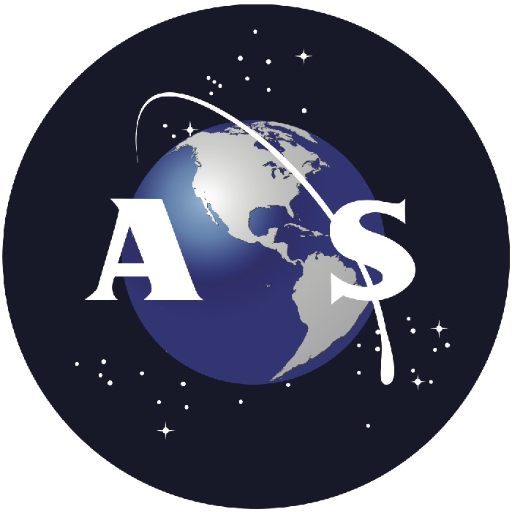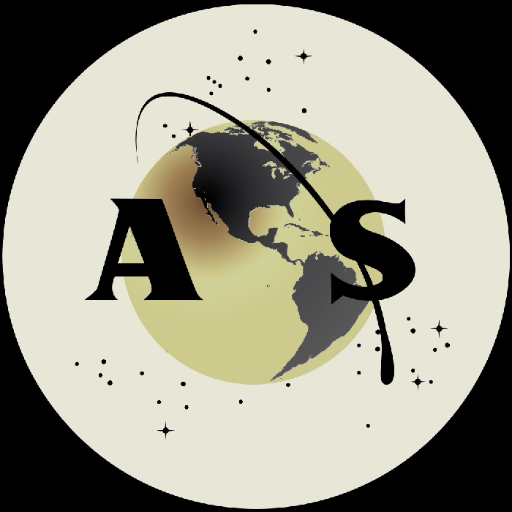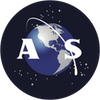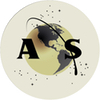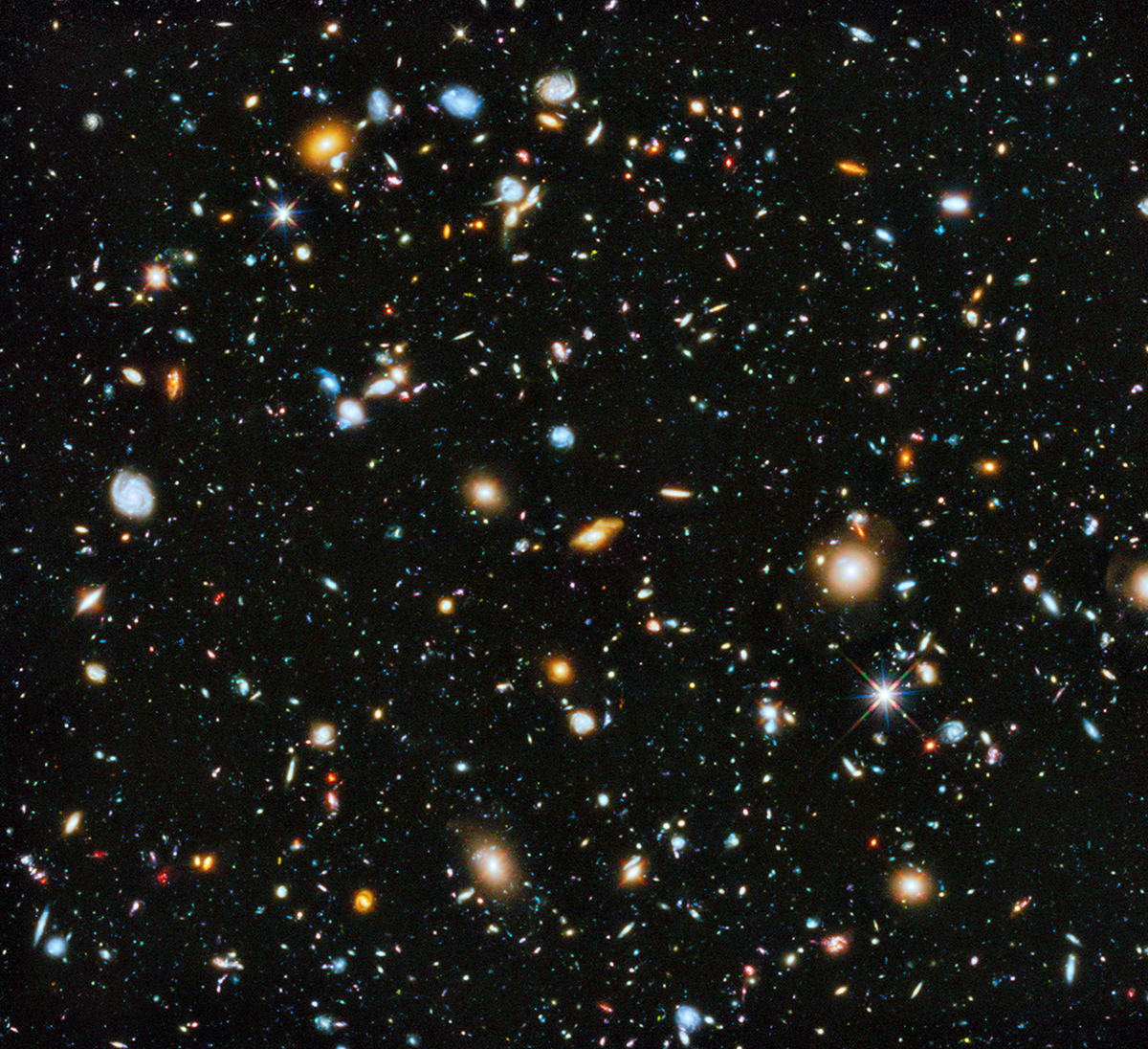
NASA and the European Space Agency’s Hubble Space Telescope (HST) has done it again—this time, in brilliant color. A newly released image shows approximately 10,000 galaxies in ultraviolet light, using the entire range of colors available to the telescope from ultraviolet to near-infrared light. According to astronomers and researchers involved with the associated study (Ultraviolet Coverage of the Hubble Ultra Deep Field), this composite of exposures taken from 2003 to 2012 using the telescope’s Advanced Camera for Surveys and Wide Field Camera 3 provides the missing link concerning star formation in the Universe.
Previously, astronomers studied images taken from 2003 to 2009 involving the Hubble Deep Field in visible and near-infrared light, and also looked at images from other observatories, such as NASA’s recently decommissioned Galaxy Evolution Explorer (GALEX). According to NASA, Hubble’s near-infrared capabilities allowed astronomers to see images of stars being born in distant galaxies appearing in primitive forms due to the great distance it takes for any visible light to travel. However, astronomers were missing a significant piece of the puzzle concerning star formation: There was simply not enough data concerning stars born at a distance of approximately five to 10 billion light-years ago.
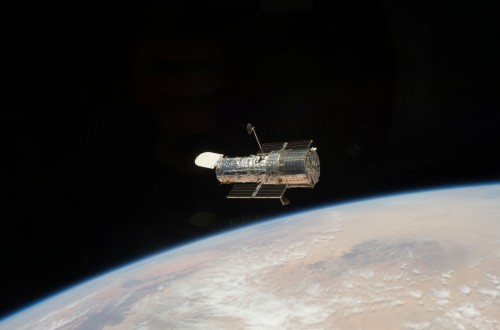
Ultraviolet light showcases large, hot, and young stars. In addition, the wavelength can be used to show the locations of such stars forming in the Universe. Having ultraviolet light images in this time period helps astronomers study how galaxies formed star clusters containing these stars. Ultraviolet light is filtered out by the Earth’s atmosphere, which makes a space telescope an ideal source to monitor such stars and galaxies.
Enter Hubble’s ultraviolet capability, and viewing these stars became wholly possible. Principal Investigator Harry Teplitz of Caltech in Pasadena, Calif., discussed the gap this study filled:
“The lack of information from ultraviolet light made studying galaxies in the HUDF [Hubble’s Deep Field] like trying to understand the history of families without knowing about the grade-school children. The addition of the ultraviolet fills in this missing range.”
Dr. Rogier Windhorst of Arizona State University in Tempe, a member of the team responsible for the study, underscored the survey’s significance and how it relates to future space telescopes already in development:
“Ultraviolet surveys like this one using the unique capability of Hubble are incredibly important in planning for NASA’s James Webb Space Telescope. Hubble provides an invaluable ultraviolet light data set that researchers will need to combine with infrared data from Webb. This is the first really deep ultraviolet image to show the power of that combination.”
As Hubble enters its 25th year of operation, it shows no signs of slowing down its capacity for revealing the Universe’s “landmarks”—near and far—in a whole new light. Recently, the telescope showed that Jupiter’s Great Red Spot appears to be shrinking, as the iconic storm’s size is the smallest it has been in recorded history. This finding was discussed at length in a previous AmericaSpace article. According to NASA, the telescope has made over one million observations since its deployment via Space Shuttle Discovery during STS-31 in April 1990. Nearly a quarter of a century on, Hubble continues to bring astronomers, researchers, and avid space watchers excitement as it uncovers the Universe’s secrets.
Want to keep up-to-date with all things space? Be sure to “Like” AmericaSpace on Facebook and follow us on Twitter: @AmericaSpace
